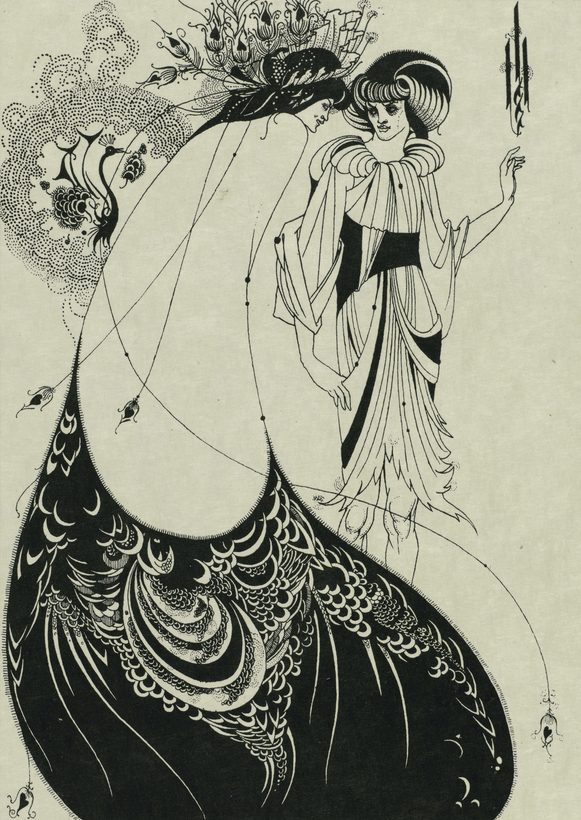The word arabesque is not technically an example of onomatopoeia, but it feels like it is. A French rendering of the Italian arabesco—“in the Arabic style”—its three syllables are aerated, airborne. There’s a bit of rubato in the word, and the sensation of an endless curve. The arabesque has found its way into music, where it is a compositional reverie or flight, and into dance, gymnastics, and figure skating, where it is an iconic position that is poised on one leg while the other is raised high to the rear, a lifting line that takes momentum from the curve in the small of the back. In classical dance, the arabesque is practically a logo of the art form.
As a design, the arabesque has been around since the Hellenistic period, but it was brought to bracing dynamism in the art and architecture of Islam. Drawing upon the spiraling life force of plants—their carefully curving tendrils, leaves, and blossoms—Islamic arabesques interlace into energized op-art fields, echo chambers of infinite regeneration. Just as Erik Satie wrote his distinctly Orientalist Gnossiennes without time signatures or bar lines, so these curvilinear patterns are timeless, soundless music.
A deep dive into the realm of the arabesque is just a museum away—once they are open again—located in the wings that hold historic palace carpets of the Middle East and India, as well as architectural surrounds and decorative screens of mind-blowing surface intricacy. The great, late cultural mover Lincoln Kirstein spoke admiringly of the Metropolitan Museum of Art’s Islamic wing—the power and the glory—and at London’s V&A, the gallery right next to its fabulous gift shop is teeming with arabesques on rugs, textiles, and tiles.
In lieu of a museum setting, you might want to take a moment to bask in a ballet of flowing, flowering arabesques—Sir Frederick Ashton’s floating infinity to the music of Satie, Monotones II. In this video excerpt from a 1989 television special, Ashton explains his inspiration for the work, and then dancers from the Joffrey Ballet perform it (beginning at 14:08). Using the simplest steps in the lexicon of classical dance, Ashton has created phrases that feel self-generating, as if the ballet could go on forever. Give yourself over to 11 minutes of purity, perfection, and peace.
When the doors open again, at the Cooper Hewitt Smithsonian Design Museum, in Manhattan, the exhibition “Botanical Expressions” (on through January 10, 2021) celebrates the curves and corkscrewing tendrils of plant forms as they pirouette through the decorative arts of past centuries. Meanwhile, did you know that there was an artistic movement in America based on the use of patterns? “With Pleasure: Pattern and Decoration in American Art, 1972–1985,” which runs through May 18 at the Museum of Contemporary Art, Los Angeles, explores the work of 50 artists who brought a postmodern sensibility to their use of historical motifs and reverberating geometries. Arabesques abound!
Ellen Lesperance does not employ arabesques in her art, but her work is pure pattern nonetheless. Inspired by the grids and symmetries of traditional knitting instructions, her colorful gouache paintings are abstract maps of female bodies, feminism compressed into the deconstructed shapes of American Symbolcraft. “Ellen Lesperance: Velvet Fist,” at the Baltimore Museum of Art through June 28, presents this artist’s unique visual calculus—as beguiling as it is spectacular.
